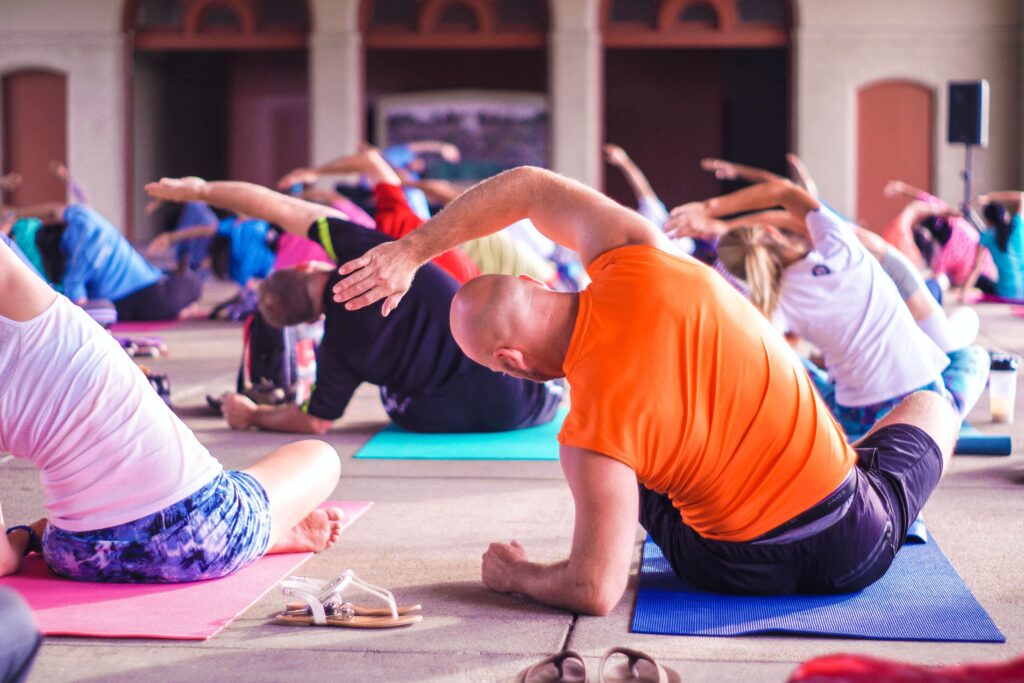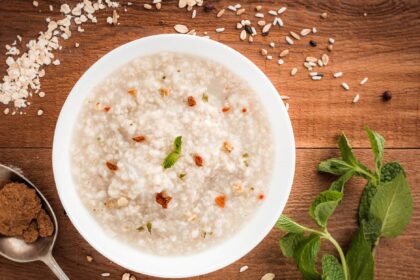Most people in the modern world do not have enough time to take care of their health. They are experiencing numerous health problems as a result. However, it can be managed by engaging in physical activity either indoor or outside. Any bodily motion that involves muscles and requires energy expenditure is considered a physical activity. They are essential to preserving mental health and wellbeing. A balanced and all-encompassing approach to physical fitness can be achieved by contribution in a variety of exercises, such as cardio, strength training, and flexibility training. You should create a customized activity plan based on unique goals, abilities, and health considerations, and speak with a healthcare professional.
This article discuss, why physical activities are essential, and how it can be done to maintain a good health.

What is physical activity?
Being physically active involves spending less time sitting down and more time moving. Many people realize that engaging in physical activity, either on its own or in conjunction with other treatments, helps them maintain good mental health. It’s not essential to train daily at the gym or run marathons to achieve this. You can engage in a variety of activities to become a little bit more active. Being regular physically active, has many advantages, including better cardiovascular health, increased strength and flexibility, improved mood and mental health, weight management, and a lower risk of developing chronic illnesses like heart disease, diabetes, and some cancers
How physical activity improves mental health?
Regular exercise has been shown to improve sleep quality, endurance, stress relief, energy and stamina, and mental clarity. Your mental body also feels better when your physical body does. High blood pressure, diabetes, and arthritis are just a few of the health issues that exercise helps to both prevent and improve. The physiologic response to stress is impacted by the increased blood flow to the brain. Time away from stressors, fulfillment from increased self-sufficiency, increased confidence, and social interaction are additional advantages of physical activity.
When you already experience mental difficulties, starting a workout routine can be challenging. If you choose an activity that you enjoy, you’ll face less resistance. Being physically active causes your brain to release feel-good chemicals that improve your mood, improve your ability to concentrate, help you sleep better, and make you feel better overall.
Other benefits include:
- Having fun
- A healthy appetite
- A sense of achievement
- More focus and motivation
- Feeling less angry or frustrated
- A natural energy boost
- Less tension, stress and mental fatigue
What type of physical activity might work at home or outside?
Picking an activity you enjoy and can fit into your daily schedule will likely make it easier for you to stay physically active. You’re much less likely to keep doing something you don’t enjoy and reap the benefits for your mental health if you force yourself to do it. There are many different things you can try; however, not everyone will enjoy or feel comfortable engaging in every activity, so it may take a few tries before you find one you like.
Here are some ideas for activities you can try:
1.Activities outsides:
- Increase your walking distance by going to work, the store, or the end of the road and back.
- Locate a local recreation center, and join classes and groups who offer a variety of sporting amenities, including squash and badminton courts.
- Walking or running organizations all organize free, open-to-all neighborhood groups with qualified volunteers.
- You can use the free outdoor gym equipment in a few local parks.
- Go for cycling to the store or to work or taking long weekend bike rides.
- A sport that promotes mindfulness, such as walking, yoga, or tai chi
- Do some Gardening or seated gardening or go for swimming
2.Activities at home:
- Play an active video game on your computer.
- Participate in a free online exercise program.
- Perform physical household tasks like vacuuming, organizing, or DIY.
- Try to stand up and move around a little bit every hour if you spend a lot of time sitting down.
- Make attempt to do some chair-based exercises, if you struggle to spend time outside of a chair due to physical limitations, mobility issues, or another condition.
- Incorporate more exercise into your daily routine, like run up the stairs, or carry your shopping bags inside one at a time.
- Turn on some music and dance around your kitchen, or organize a small dance party with your loved ones.
3.Motivation and extra support:
- Join many charities, including mind, support people who want to take on an active challenge, like run or bike ride.
- Listening to music while working out can help to distract, amuse, or motivate you.
- You could get in touch with other people who are attempting to become more active on a community like Mind’s Side by Side.
- Exercising with others can be motivating and make a new activity more pleasurable.
4.Disability, mental health and inclusive activities:
There are many options for staying active if you have a chronic health condition, including mental health issues. These include disability sports, walking sports, the gym, and specific activities for people with a mental health problem.
How can I start getting active?
Starting to become more active can be challenging, especially if you’re not feeling well or feel like there are obstacles in your way. Here are some indicators to get you going:
1.You need to get start:
- Get going slowly. It might take some time to improve your fitness.
- Create a schedule that is achievable and practical. Try to incorporate exercise into your daily life or find ways to be active that fit around your commitments.
- Your energy levels will change from day to day, and there will be times when you are unable to be as active as you would like.
- Make an effort to recognize and avoid your triggers.
- Finding an activity you enjoy may take some time.
- Make the most of your highs and lows. If you take medication that makes you tired in the mornings, give yourself some time to rest and schedule some exercise for later. Allow yourself to take a break if you require one, and then resume when you feel better.
- Having alternatives that will improve your mood is a good idea if you are unable to be as active as you would like.
- Try to avoid comparing yourself to others, and determine your own objectives based on your skills and desired outcomes.
2.If you need a confidence boost:
- Seek out organizations with like-minded people, which offer sessions for people with mental health issues.
- For the first few meetings as you adjust to the new environment, some clubs will let you attend with someone you know, such as a friend, family member, coworker, or support worker.
- Take into account performing a task by yourself. Physical activities like walking, running, or cycling are excellent because they can help you relax and can be incorporated into your daily routine.
Keep in mind that you are not alone. The majority of people worry about their bodies, and other people might be experiencing self-consciousness as well.
What are the mental health benefits of physical activity or exercise?
Physical activity can enhance your physical well-being and physique, reduce belly fat, enhance sex life, and even lengthen your life. But most people aren’t motivated to continue exercising by that. People who engage in regular physical activity tend to do so because it greatly enhances their sense of wellbeing. Even they experience an increase in energy throughout the day, experience better sleep at night, have sharper memories, and feel more at ease and optimistic about their lives. Additionally, it is a potent treatment for many typical mental health issues.
Regular physical activity or movement can significantly improve symptoms of depression, anxiety, and ADHD (Attention-Deficit / Hyperactivity Disorder). Moreover, it lowers stress, enhances memory, promotes sound sleep, and uplifts your mood in general. According to research, even small amounts of physical activity can have a significant impact.
Other mental health benefits of exercise
Regular physical activity can still provide a welcome boost to your mood, outlook, and mental well-being even if you don’t have a mental health condition.
Physical exercise can help with:
- Yoga and gentle stretching are relaxing exercises that can aid in sleep promotion at night.
- Regular stretching of body can help you develop flexibility and cope in a healthy way when faced with mental or emotional challenges in life, and it can strengthen your immune system.
- Physical activities several times a week, raising your heart rate will give you more vigor.
- Greater mental and memory acuity. The same endorphins that improve your mood also aid in concentration and help you feel mentally alert for the task at hand.
- Regular exercise is an investment in your mind, body, and soul. When you do it regularly, it can help you feel strong and powerful and improve your sense of self-worth.
How active do I need to be?
It’s more crucial to find a habitual activity that you enjoy than to force yourself to do something you don’t like. You could try vigorous exercise such as brisk walking, mowing the lawn, dancing, swimming, following an exercise class, trying a new sport, or anything else that gets your body moving. The recommendations advise performing strength-training exercises at least twice per week. This might involve practicing yoga or pilates, lifting weights, pushing a wheelchair, or carrying heavy bags of groceries.
Consider your current level of fitness, the amount of time you have available for exercise, and what you feel is reasonable. Anything you do to become more active and spend less time lying down or sitting still is a good idea.

How much physical activity should I do?
Being more active has many advantages, and any amount of exercise is beneficial. You can start feeling better without starting a rigorous training regimen. It’s up to you how much exercise you choose to get. This will depend on how active and fit you are right now, as well as what you can fit into your daily schedule. The amount of activity that is safe for you to engage in may also depend on other factors, such as any medications you may be taking, any eating issues, any anxiety, and any physical health issues. Depending on how you are feeling and what you are capable of, this may occasionally change.
It’s important to keep in mind that NHS (National Health Service) guideline is just a general guide, so it’s okay if you don’t feel like you can accomplish this right away. Being physically inactive too much or too little can both be harmful. At the same time overtraining or over exercising is harmful to your physical and mental health. For instance, it can deplete muscle mass and harm tendons, ligaments, bones, cartilage, and joints over the long term. Finding an activity that works for you and beginning to try to increase your activity levels are both crucial.
How physical activities support health conditions?
Doing the right amount of physical activity can help many people manage their physical health conditions and prevent further health issues in the future. You should be particularly careful if you have:
- High blood pressure
- Chest pains
- A heart condition
- Diabetes
- Are pregnant or have recently given birth
- An injury.
Always check with your GP about what is safe for you before you start any physical activity.
Conclusion
Lastly, it should be noted that physical activity is crucial for development overall mental health and wellbeing. Exercise on a regular basis helps to control weight, increase strength, and improve flexibility. A healthy and active lifestyle can be promoted by participating in a variety of activities that fit each person’s preferences and abilities. When creating heavy activity or an exercise program to meet your unique needs and goals, always better to take the advice of a medical or fitness professional.
FAQ
What are the best physical activities for overall health and fitness?
A variety of cardiovascular exercises, (like running or cycling), strength training exercises, (like lifting weights or using your body weight), and flexibility exercises, (like yoga or stretching), typically make up the best physical activities for overall health and fitness. Taking part in a variety of activities helps to increase flexibility, strength, and cardiovascular fitness, as well as general wellbeing.
How frequently should I exercise for optimal health benefits?
It is generally advised to perform at least 150 minutes of moderate-intensity aerobic activity or 75 minutes of vigorous-intensity aerobic activity per week for the best health benefits. Furthermore, including at least two days per week of strength training exercises is good for the health of your bones and muscles. Although individual exercise requirements may differ, it is best to speak with a healthcare professional for tailored advice.
What are the specific benefits of different types of physical activities?
Specific advantages are provided by various forms of exercise. Running or swimming are examples of cardiovascular exercises that enhance heart health and stamina. Exercises that increase muscle strength and bone density include weightlifting and resistance training. Yoga and other flexibility practices improve joint mobility and encourage relaxation. A well-rounded approach to fitness can be achieved by participating in a variety of physical activities, which maximizes the advantages for general health and wellbeing.
How can physical activity help with weight loss and weight management?
By increasing calorie expenditure and enhancing metabolism, exercise is essential for weight loss and weight management. It is simpler to achieve and maintain a healthy weight with regular exercise because it increases body composition, burns calories, keep hydrated and builds lean muscle mass. Physical activity supports long-term weight management and sustainable weight loss when combined with a healthy diet.
Reference Used:
http://www.helpguide.org/articles/healthy-living/the-mental-health-benefits-of-exercise.htm





